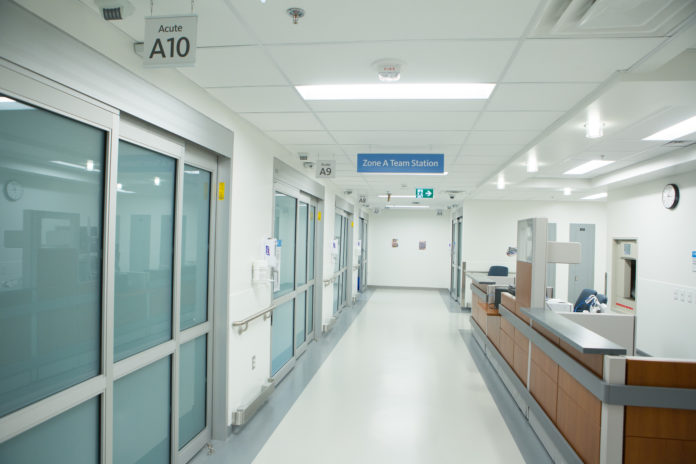
By Kate Manicom
All patients arriving at St. Michael’s Emergency Department come through the same doors, whether they have a broken ankle or have been severely injured in a collision. When it’s busy, the current configuration is challenging for both patients and for staff.
“Patients who arrive on their own aren’t sure who to speak to or where to go, creating bottlenecks at the registration desk,” says Karin Wells, a registered nurse in St. Michael’s ED. “Patients on stretchers who are brought in by Toronto Paramedic Services can obstruct our view into the waiting area, making it tough to monitor those who are seated and may need to be seen quickly. It also presents privacy challenges to have our trauma patients transferred through the area, and can be upsetting for other patients and loved ones who are waiting in the same space.”
As part of the renovation and expansion of the ED, the ambulance bay, triage and patient waiting area will be reconfigured to create better flow for clinical staff and first responders, and a better experience for patients and their loved ones. A key change is creating two separate entrances for patients who are transported by Toronto Paramedic Services and for those who arrive on their own.
The new triage area will be larger, with better sightlines for staff. The registration desk will be positioned across from the door, making the triage process more clear for patients. Outside, a new drop-off area for cars and taxis will be created on Shuter Street.
“The nature of the ED is very stressful to begin with, and triage is often a patient’s first impression of the hospital,” says Natasha Cummings, a registered nurse in the ED. “Having a welcoming space that is easier to navigate will help to put patients at ease.”
The ambulance bay, which now can accommodate only three to four vehicles, will also be expanded. Increasing dedicated parking for ambulances will help to ensure they do not impede traffic around the hospital and will bring patients closer to the hospital doors. A garage door will be added to the bay to provide increased security when required.

The overall renovations to the ED will double its size and will include more patient treatment areas, including 24-7 diagnostic imaging inside the department and a larger ambulatory area. It will also include a fully renovated and enhanced trauma area and a new, dedicated mental health area, physically separated from the rest of the ED, staffed by specially educated crisis workers and health care providers.
ED staff, like Cummings, say they are eager for the changes. “If only we had a magic wand to make it happen right away!”
Kate Manicom works in communications at St. Michael’s Hospital.

